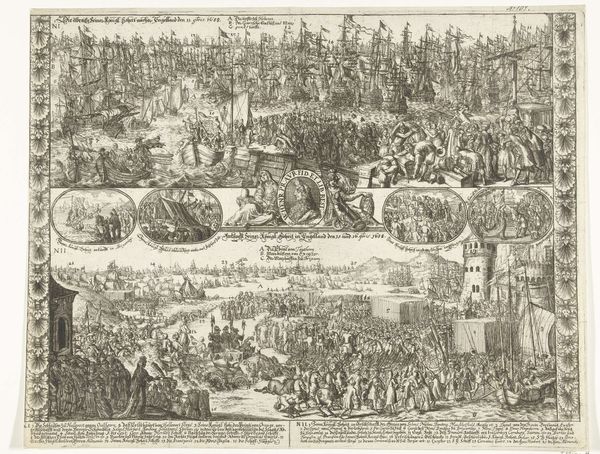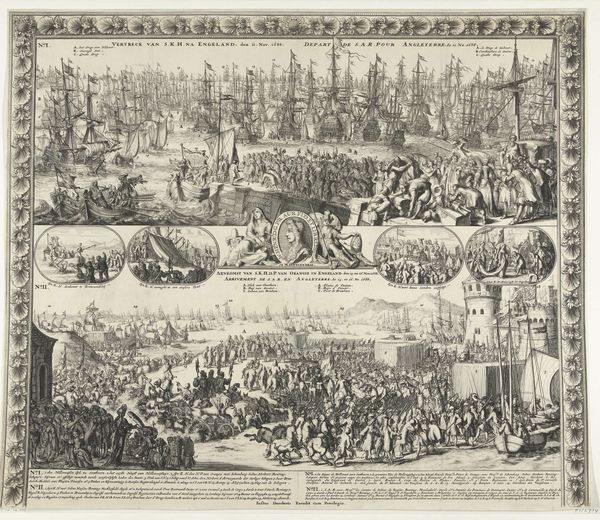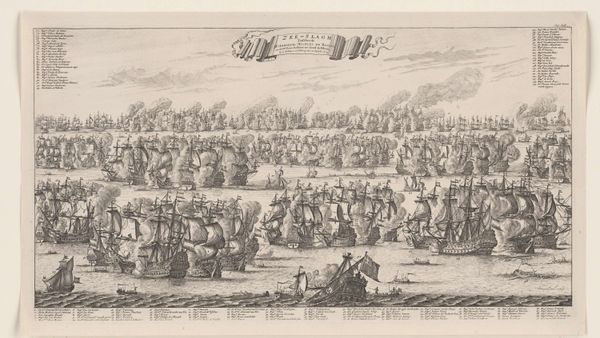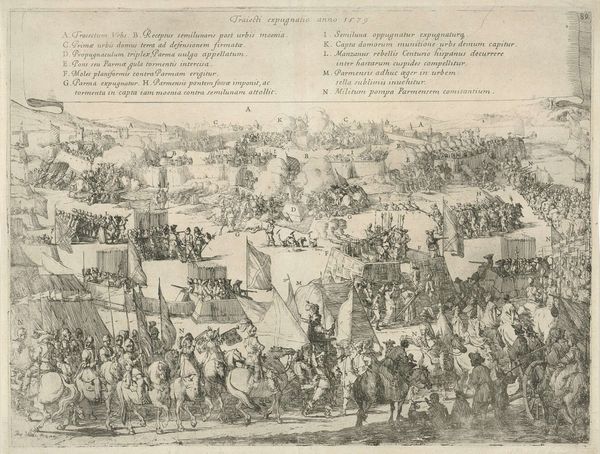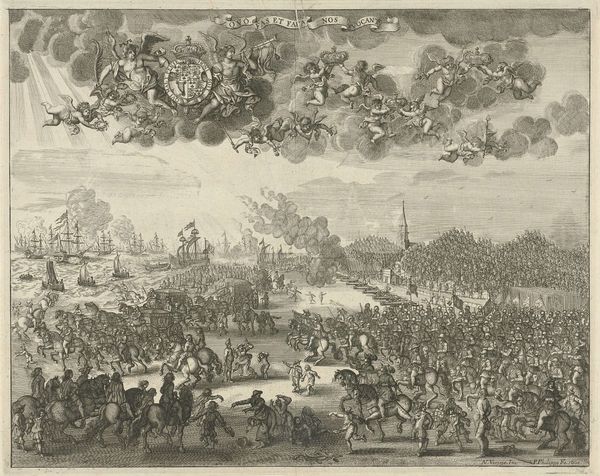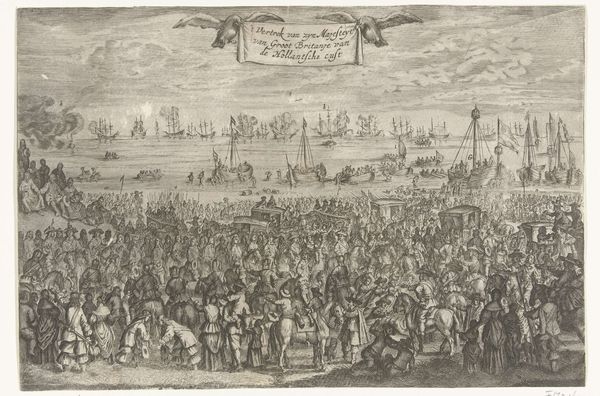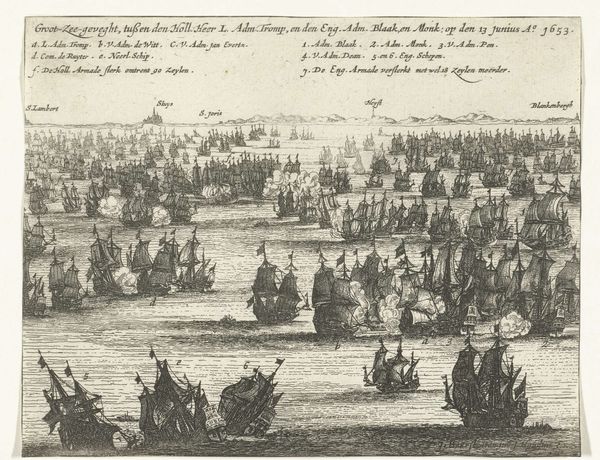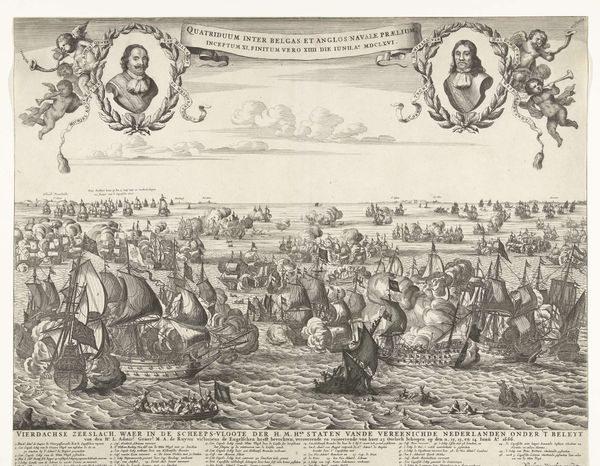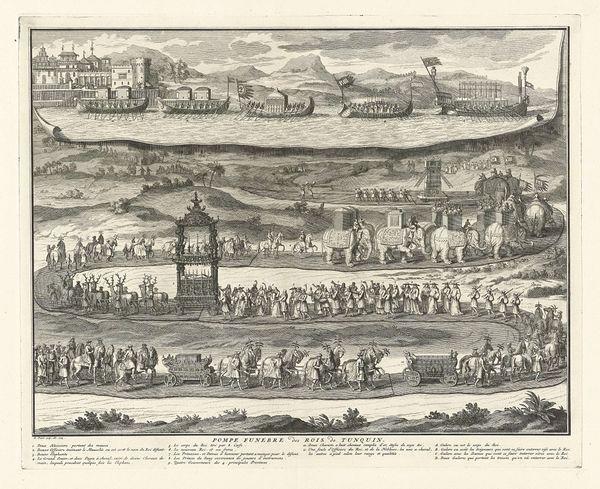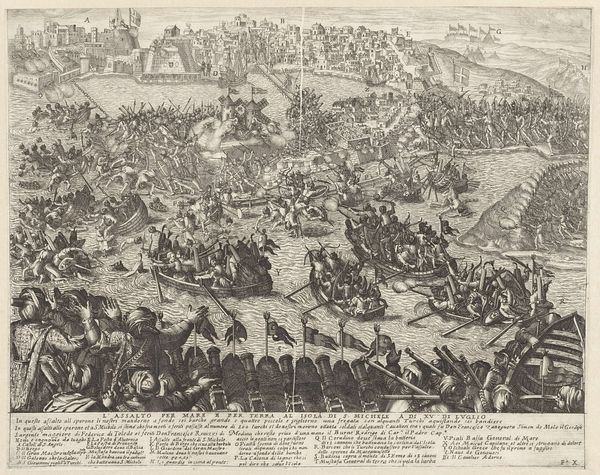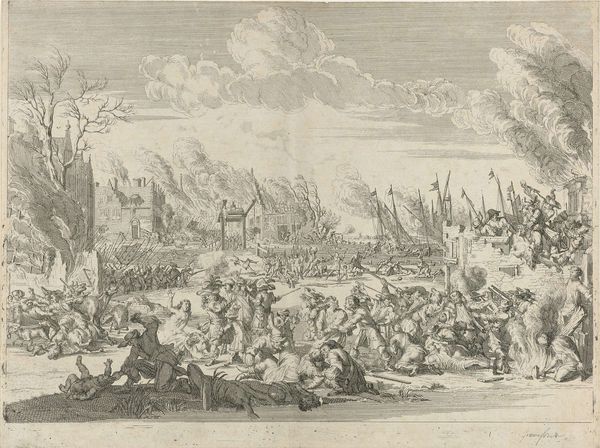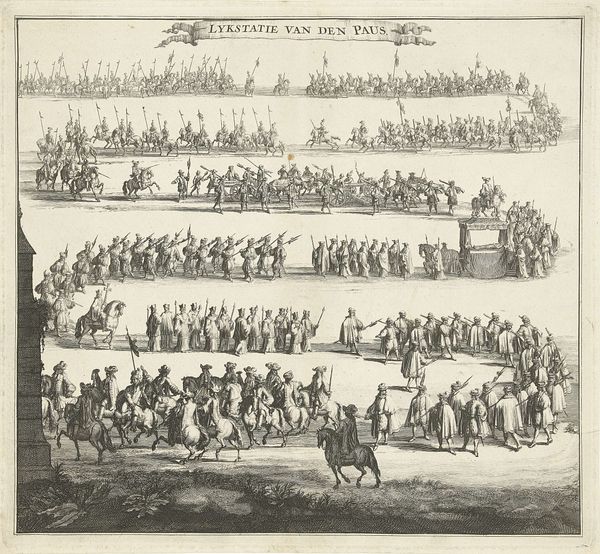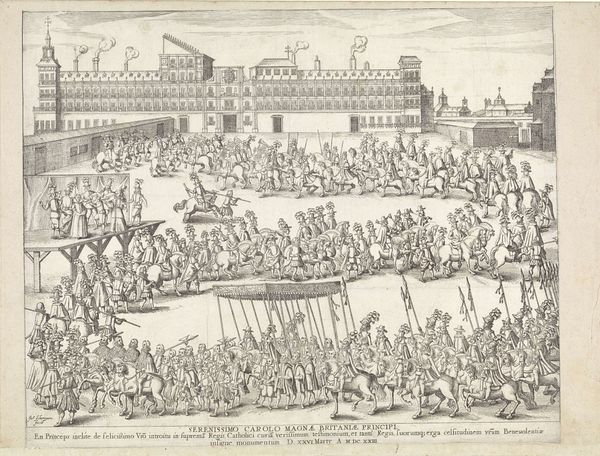
print, etching, engraving
#
narrative-art
#
baroque
#
pen drawing
# print
#
etching
#
landscape
#
cityscape
#
history-painting
#
engraving
Dimensions: height 450 mm, width 544 mm
Copyright: Rijks Museum: Open Domain
Curator: Before us is "The Departure of William III to England, 1688," created by Romeyn de Hooghe. It’s an etching and engraving, a print capturing a pivotal moment in European history. Editor: My first impression is of organized chaos. The composition is incredibly detailed, almost overwhelming, with lines upon lines creating a sense of vast movement. It feels dynamic, but also a little...rigid? Curator: Rigid? I see it as a strategic deployment. Consider the historical context: this image served as propaganda, justifying William's invasion. Every element—the orderly fleet, the cheering crowds—reinforces the narrative of a welcomed liberator. Editor: I concede the strategic aspect, but look closer at the etching. The density of the lines flattens the image. There's little sense of atmospheric perspective; the ships in the distance are just as defined as those in the foreground. It's almost like a map rather than a scene. Curator: Maps themselves can be powerful tools of persuasion. De Hooghe is not just depicting an event; he is constructing a visual argument. Note the symbolic details: the allegorical figures, the inscribed banners. It's a carefully orchestrated performance designed to legitimize William's claim to the English throne. The narrative trumps naturalism here. Editor: True, those allegorical elements add a layer of complexity. The central medallion with William’s portrait... it disrupts the scene's supposed immediacy. It is drawing focus back to his image. What do you think the effect of reproducing it as print could do for him at the time? Curator: Making it available, almost mass-produced. It allowed this image to circulate widely. It made William’s story—his version of it, anyway— accessible throughout the Dutch Republic and beyond. Remember, prints were a vital form of media and information dissemination. Editor: Yes, a vital point. Despite my formal concerns, one cannot deny that the details embedded within its rigid form speaks to broader audiences and social-political contexts. Curator: Indeed. This artwork serves as a great illustration of that concept. It's both art and propaganda, a reminder of how images can be employed to shape public perception during times of immense change.
Comments
No comments
Be the first to comment and join the conversation on the ultimate creative platform.
